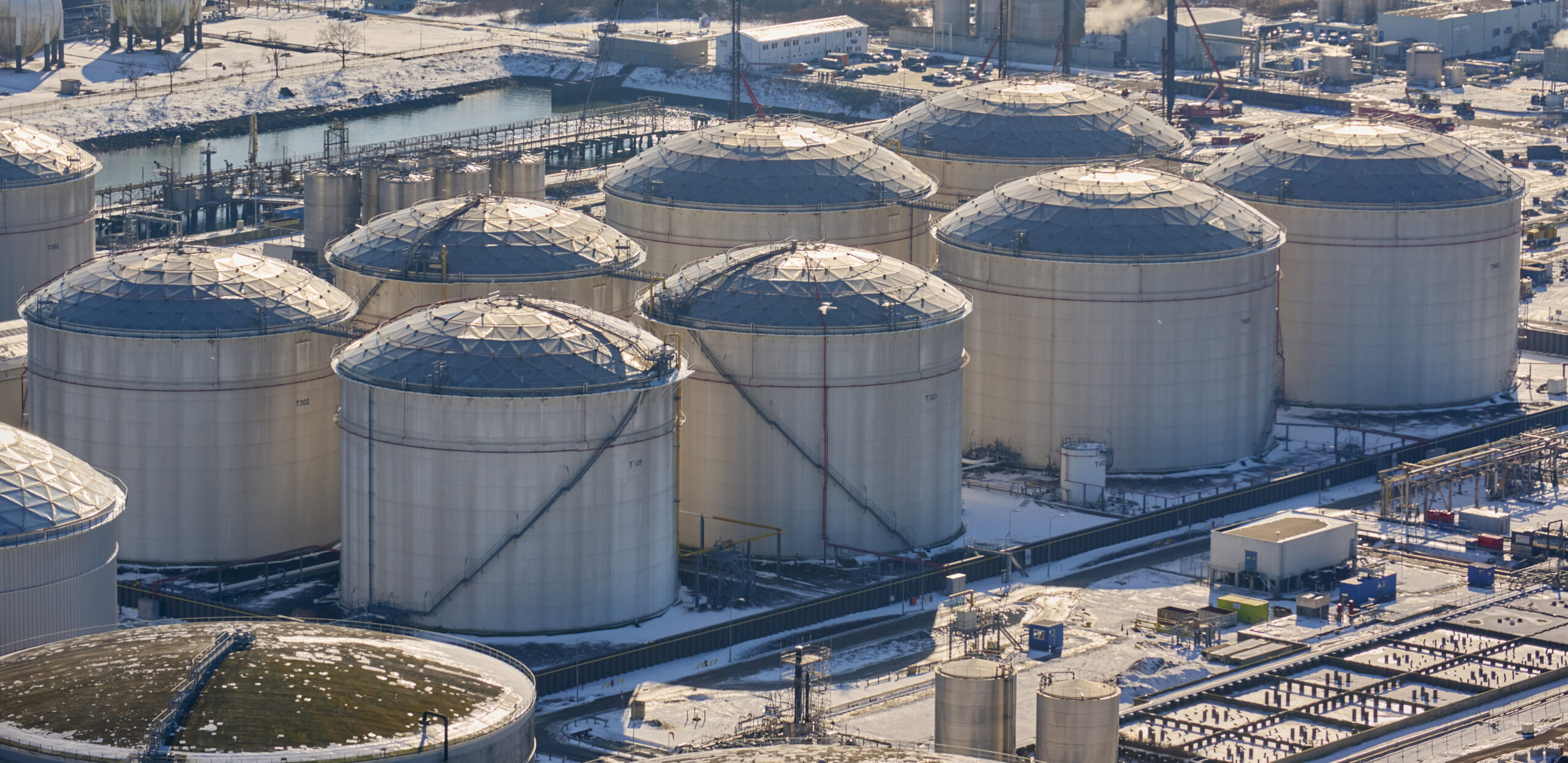Introduction:
As atmospheric storage tanks store tonnes of volatile, and combustible hydrocarbons, fixed foam distribution systems for fighting end extinguishing fires inside the tank often are an integral part of any tank design. Usually these systems involved the use of foam dispensing systems. Apart from that tanks quite often have a fire detection system in service, that will allow operators to respond fast in case of a fire. Tanks equipped with aluminium domes, though considered and proven extremely safe are no exception to the use of these systems.
Fire detection in the rim seal area:

Fire detection on storage tanks can be done in a number of ways. Though not covered in detail we would like to identify the following methods for seal fire detection, for reference sake:
- Thermoplastic (Polyflo) fire detection cable (any heat in the rim area will melt the cable, and as a result the pressure drop of the inert gas released from the cable will trigger a fire alarm)
- Systems with sprinkler nozzles (same working mechanism as above)
These systems can be used with either external or internal floating roofs, and could be combined with inert gas purging systems.
On aluminium dome roof tanks we have installed a significant number of aluminium dome roofs with infrared heat- and fire sensors. These sensor detect any heat or fire, and send an alarm.
These fire detection systems are also suitable for use without internal floating roof.
Fire scenarios:
Typically the there are two fire scenarios on ADRT (aluminium dome roof tanks), Rim fire (for dome roof tanks with an all metal internal floating roof) or full surface fire for dome roof tanks with a non suitable internal floating roof or without it.
The design of a foam system is in most legislation governed by NFPA11.
NFPA 11, the standard for stationary foam systems on storage tanks:
When looking at integrating the foam distribution systems in the design for a tank with an aluminium dome roof paragraphs 5.2.5.1.3. and 5.2.5.1.4. are relevant.
These points require:
- foam nozzles shall be attached to the top of the shell, and prevent product flow into connecting piping
- foam nozzles shall not be damaged in case the roof is displaced (frangible behaviour)
Positioning of foam nozzles, and foam nozzles penetrations on aluminium dome roof tanks:
There are different ways to integrate foam systems into the design of tanks with an aluminium dome roof. We will cover the most common ways
Foam nozzle to penetrate the top course of the tank shell:
The foam nozzles can be positioned to penetrate the tank shell on a flanged nozzle, immediately below the top angle of the tank shell. This effectively addresses any concerns of foam nozzles not being affected in case of any internal explosions which might damage an existing roof. The disadvantages might be in the restrictions this introduces on tank capacity, and in the fact that product should not be able to flow into the foam system piping when it is being filled to a level that would reach the flanged nozzle for the foam system on the top course of the tank shell.

Foam nozzle to penetrate the dome roof below the dome tension ring:
An other approach would be for the foam nozzles to penetrate the dome panels, in the area below the tension ring. These panels are not connected to the tank, and as such these panels will give way in case of any internal deflagration. For this reason the foam nozzle support structure is required to be rigid enough, therefore its design should incorporate sufficient strength.
The advantage of this solution might be increased storage tank capacity. This solution will also prevent product flow into the foam system piping.
We have seen an an alternative where the foam nozzles penetrate the dome structure in the area above the tension ring and the perimeter flashing. This part of the dome is stronger and will remain in place under any circumstance.
This asolutoin has the same advantages as the previous, mainly increased capacity when compared to the shell penetrating nozzle.
We do not advise this system as in case of an internal deflagration the dome roof might be separated ly from the top of the tank, as the dome roof is a frangible roof. In this case the foam nozzles will be torn off and rendered useless.


